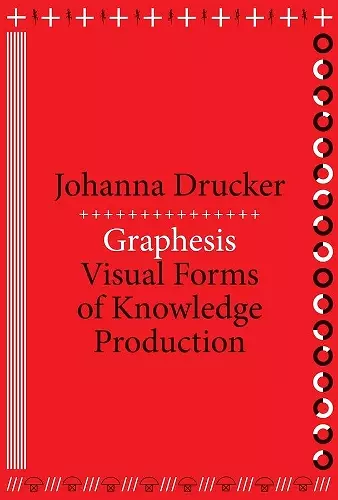Graphesis
Visual Forms of Knowledge Production
Format:Paperback
Publisher:Harvard University Press
Published:7th Jul '14
Should be back in stock very soon

In our current screen-saturated culture, we take in more information through visual means than at any point in history. The computers and smart phones that constantly flood us with images do more than simply convey information. They structure our relationship to information through graphical formats. Learning to interpret how visual forms not only present but produce knowledge, says Johanna Drucker, has become an essential contemporary skill.
Graphesis provides a descriptive critical language for the analysis of graphical knowledge. In an interdisciplinary study fusing digital humanities with media studies and graphic design history, Drucker outlines the principles by which visual formats organize meaningful content. Among the most significant of these formats is the graphical user interface (GUI)—the dominant feature of the screens of nearly all consumer electronic devices. Because so much of our personal and professional lives is mediated through visual interfaces, it is important to start thinking critically about how they shape knowledge, our behavior, and even our identity.
Information graphics bear tell-tale signs of the disciplines in which they originated: statistics, business, and the empirical sciences. Drucker makes the case for studying visuality from a humanistic perspective, exploring how graphic languages can serve fields where qualitative judgments take priority over quantitative statements of fact. Graphesis offers a new epistemology of the ways we process information, embracing the full potential of visual forms and formats of knowledge production.
The pages of Graphesis teem with color reproductions of 5,000 years’ worth of various modes of visually rendered knowledge—showing how they have emerged and developed over time, growing familiar but also defining or reinforcing ways to apprehend information… I suspect Graphesis may prove to be an important book. -- Scott McLemee * Inside Higher Ed *
Graphesis is a significant contribution to the field, every bit as important as Drucker’s The Visible Word. Indeed, the world has changed, and information design has shifted significantly with it. In this text, Drucker should be applauded for taking a broad view of her subject, tackling little-studied imagery as well as visual systems of thinking. -- Elizabeth Guffey, Professor of Art and Design History, Purchase College, State University of New York
Graphesis is a sophisticated critique of some of the foundational assumptions of HCI (human–computer interaction), interaction design, and information visualization. Drucker makes a compelling case for the value of humanistic inquiry into subjects that have traditionally belonged solely to computer experts and social scientists. -- Maria Engberg, Assistant Professor of Media Technology, Malmö University, and Jay David Bolter, Professor of Digital Media, Georgia Institute of Technology
ISBN: 9780674724938
Dimensions: unknown
Weight: unknown
216 pages